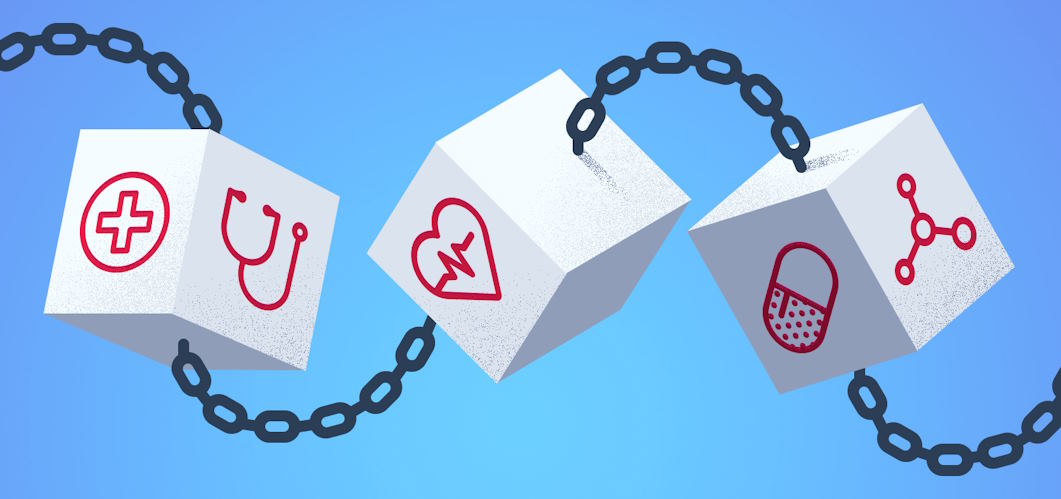In the ever-evolving landscape of healthcare, the urgency to fortify data security and streamline processes has become paramount. Traditional healthcare systems, often centralized and vulnerable to cyber threats, are grappling with the daunting task of safeguarding sensitive patient information. Enter blockchain technology, a decentralized and transparent ledger system originally designed for cryptocurrencies but now emerging as a groundbreaking solution for the healthcare sector.
How Blockchain Addresses Healthcare Challenges
Decentralized Data Management:
In healthcare, data is not just information; it’s a lifeline. Blockchain’s decentralized data management system becomes a formidable ally in safeguarding this invaluable resource. By eliminating a single point of failure, blockchain mitigates the risk of data breaches and unauthorized access. Distributing data across the network ensures that no central authority holds a monopoly, enhancing the overall security posture. This decentralization not only fortifies patient privacy but also ensures the availability and resilience of healthcare data.

Data Integrity and Immutability:
Blockchain’s impact on healthcare extends beyond security – it fundamentally transforms how health records are managed. The technology ensures the integrity of health records by creating an immutable ledger. Once information is recorded, it becomes practically impossible to alter. This immutability serves as a robust defense against unauthorized changes, providing a trustworthy and unforgeable history of patient data. As a result, healthcare providers can have confidence in the accuracy and reliability of the information at their fingertips.
Smart Contracts for Efficient Processes:
From verifying insurance details to processing billing and payments, smart contracts streamline workflows. This not only cuts down on processing times but also minimizes errors and discrepancies, ultimately leading to a more seamless and cost-effective healthcare system. Blockchain’s embrace of smart contracts represents a leap towards a future where healthcare administration is not just secure but also remarkably efficient.
Potential Challenges and Concerns
Scalability issues in blockchain implementation:
While blockchain offers a robust solution to healthcare’s security and efficiency challenges, scalability remains a looming concern. The decentralized nature of blockchain, while ensuring security, can lead to slower transaction speeds and increased resource demands. As healthcare systems grow in complexity and size, addressing scalability becomes crucial to prevent bottlenecks and ensure the seamless flow of data across the network.

Regulatory hurdles and compliance considerations:
The integration of blockchain into healthcare faces a regulatory landscape that is still evolving. Navigating the complex web of regulations and compliance standards requires careful consideration. Striking a balance between innovation and adherence to existing regulations poses a significant challenge. As blockchain disrupts traditional data management paradigms, policymakers must adapt and establish clear guidelines to ensure the technology’s responsible and compliant use within the healthcare sector.
Addressing privacy concerns and ensuring patient consent:
Patient privacy is sacrosanct in healthcare, and any technological shift must prioritize it. Blockchain’s transparency, while a strength, can also be perceived as a threat to privacy. Striking the right balance between transparency and confidentiality is imperative. Ensuring patients have control over their data and explicit consent mechanisms are in place is crucial. Blockchain developers and healthcare providers must collaborate to implement solutions that uphold the highest standards of privacy and data protection while harnessing the potential benefits of this transformative technology.
